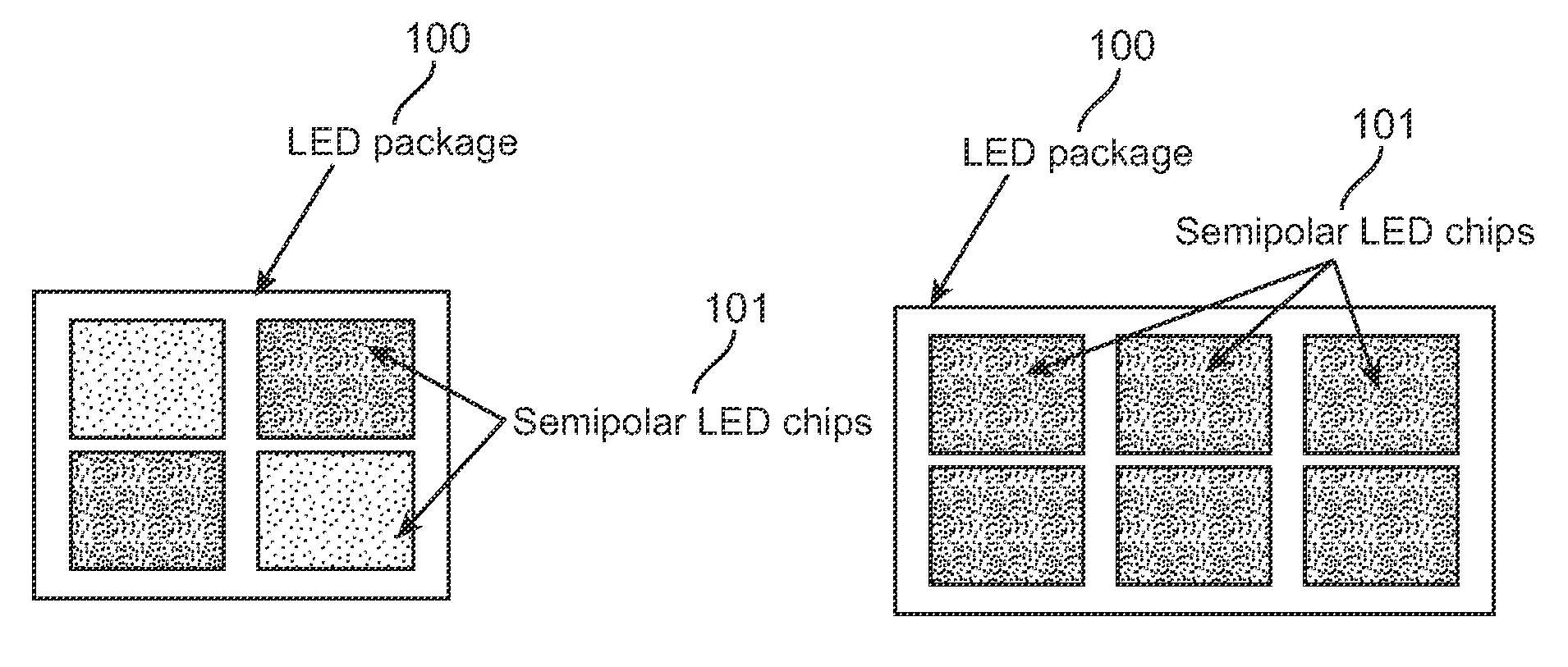HIGHLY POLARIZED WHITE LIGHT SOURCE BY COMBINING BLUE LED ON SEMIPOLAR OR NONPOLAR GaN WITH YELLOW LED ON SEMIPOLAR OR NONPOLAR GaN
a white light source, high-polarized technology, applied in the field of lighting, can solve the problems of affecting reducing the efficiency of light sources, so as to achieve the effect of improving efficiency and being easy to implemen
- Summary
- Abstract
- Description
- Claims
- Application Information
AI Technical Summary
Benefits of technology
Problems solved by technology
Method used
Image
Examples
first embodiment
[0029]FIG. 1 shows this invention where FIG. 1A presents copackaged blue and yellow semipolar GaN-based LEDs and FIG. 1B presents copackaged blue, green, and red semipolar GaN-based LEDs according to an embodiment of the present invention.
second embodiment
[0030]FIG. 2 shows this invention where FIG. 2A presents monolithic side-by-side blue and yellow semipolar GaN-based LEDs and FIG. 2B presents monolithic side by side blue, green, and red semipolar GaN-based LEDs according to an embodiment of the present invention.
third embodiment
[0031]FIG. 3 shows this invention where FIG. 3A presents vertically stacked blue and yellow semipolar GaN-based LEDs and FIG. 3B presents vertically stacked blue, green, and red semipolar GaN-based LED emitting regions according to an embodiment of the present invention.
PUM
 Login to View More
Login to View More Abstract
Description
Claims
Application Information
 Login to View More
Login to View More - R&D
- Intellectual Property
- Life Sciences
- Materials
- Tech Scout
- Unparalleled Data Quality
- Higher Quality Content
- 60% Fewer Hallucinations
Browse by: Latest US Patents, China's latest patents, Technical Efficacy Thesaurus, Application Domain, Technology Topic, Popular Technical Reports.
© 2025 PatSnap. All rights reserved.Legal|Privacy policy|Modern Slavery Act Transparency Statement|Sitemap|About US| Contact US: help@patsnap.com



